|

|
  |
|
|
|
|
|
After the pad accident the spacecraft was moved to Kennedy Space Center for analysis. It was then moved to Langley and sealed in a storage building with its interior hardware. Although this facility was designed to be sealed with a high nitrogen content atmosphere, it began to leak and maintainence was difficult. Plans to store the Apollo 1 CM in the same silo as the Challenger debris at Cape Canaveral, FL,were changed due to public pressure. But, in preparation for the move, the capsule and heat shield were separated and cut in half. Betty Grissom, widow of astronaut Gus Grissom, made an attempt in 1995 to have Apollo 1 displayed at the Astronaut Hall of Fame in Titusville, Florida. This idea was nixed by NASA and the HOF board, instead chose to display Apollo 14. In 2006, a new environmentally controlled storage facility was constructed approximately 30 meters from the old storage building. AS-204, along with 81 cartons of removed interior and associated hardware, were moved to the new facility on February 17, 2007. The capsule currently remains at Langley. |
Located at: NASA Langley Research Center
Photo by: NASA |
Accident report from NASM.
Mission information available from NASA |
 |
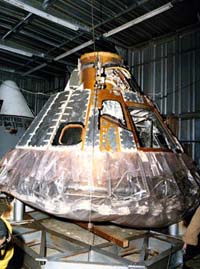 |
 |
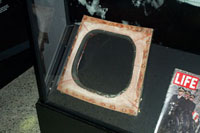
Apollo 1 window frame displayed at the U.S. Space and Rocket Center
Image by: Jim Gerard
Date: June 17, 2002
|
| Starboard side |
Port side |
On LC-34, Cape Canaveral, FL |
Scans courtesy collectSPACE |
 |
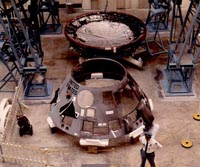 |
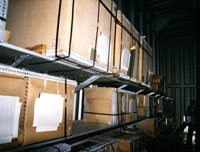 |
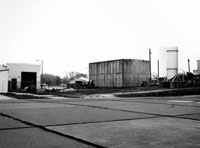 |
| During investigation - pressure vessel |
During investigation - outer hull |
81 cartons store associated interior hardware |
Scan of former secure storage facility |
|
|
|
|
|
|
|
|
|
|
|
|
|
Last Updated on: Thursday, September 13, 2007
|
|
|
A Field Guide to American Spacecraft
by Jim Gerard
www.americanspacecraft.com
|
|
|
|



